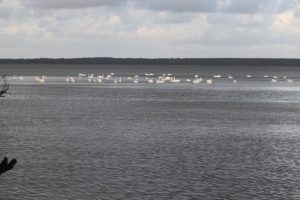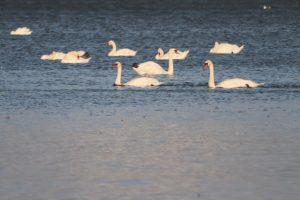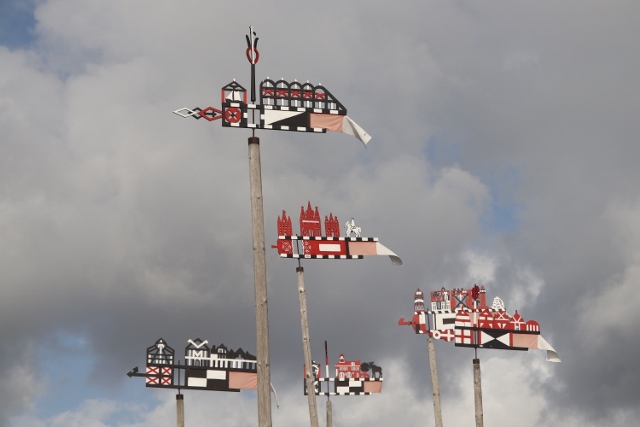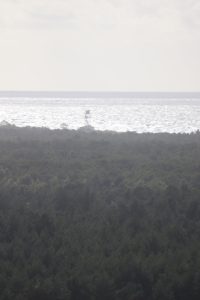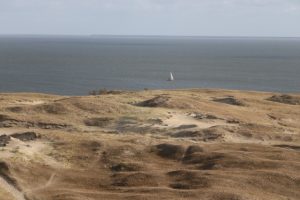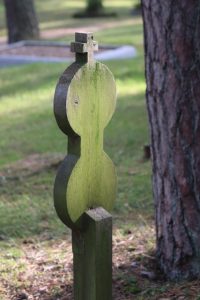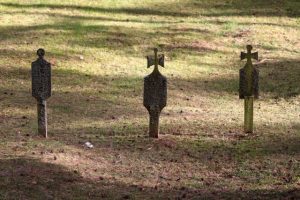I had to look it up, too, but the Curonian Spit is the name an almost 100 km long, thin dune-covered sand bank that separates a lagoon from the Baltic Sea. About half of it is Lithuanian territory, the rest is Russian, part of Kaliningrad.
The Lithuanian part is accessed from Klaipeda, our entry into Lithuania – we drove here from Liepaja along the Baltic coast, but we didn’t get to see much of it. Klaipeda is the country’s third largest city and the only important sea port. From here, ferries depart, for instance to Germany and to Denmark. But also, to our surprise, to the Curonian Split. Somehow we had expected to just be able to drive onto the narrow land tongue, but no, there is no direct connection here, no bridge, so we suddenly found ourselves lining up for another ferry crossing, of just 20 minutes, no more. That is, if you can get onto the boat, of course. On a Saturday, brilliant autumn weather, it took a few departures before we got on.
Which should have been a sign. The Curonian Spit turns out to be incredibly touristic; no surprise really, as this is a great nature area, a national park even, with easily accessible beaches on both sides on the Spit. Yet, equally unexpected by us. For most of the drive to Nida, at the far end of the Lithuanian part, we drove in convoy – there is really only one road, of course.
But I would not have wanted to miss the experience. It is indeed a beautiful area, of mostly pine woods, introduced to stabilise the dune ridge. Because the spit is narrow, between 400 and 3800 meters, in many places you see the water, and less vegetated dunes, through the woods, sometimes even on both sides. Difficult to stop, though, so we continued to the end, to the town of Nida, where we could climb the highest dune of all, the 52 meter high c. Because of the ecological sensitivity of the dune, the only way up is via wooden stairs and board walks, to avoid erosional damage to the sands.
The view from the top of the dune is great, of course, overseeing the spit, the lagoon and the Baltic Sea. And a glimpse of Russia, of course, complete with watch tower and antennas.
However, the real reason to come this far is the existence of the Nida cemetery, unique because of its wooden tomb monuments. These, apparently, originate from the 19th century, carved for the deceased in the form of stylistic plants, birds and hearts. Many of the monuments have been restored in 1975 by a local artist, otherwise the older wooden structures would no doubt have disappeared by now. Not every tomb is adorned with a special monument, there are also simple, and more elaborate, wooden and metal crosses. The combination, however, makes this a very special cemetery, indeed.
By the time we reached the ferry back to the mainland, everybody else had also decided to return. So it took another three of four boats, well over an hour, to get us across. Imagine this place in the middle of the summer!
Next: more crosses.





